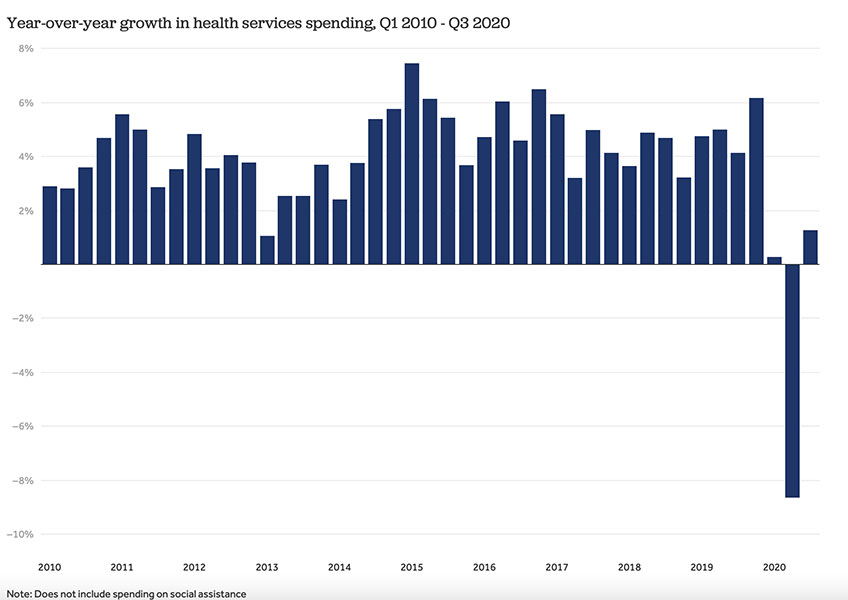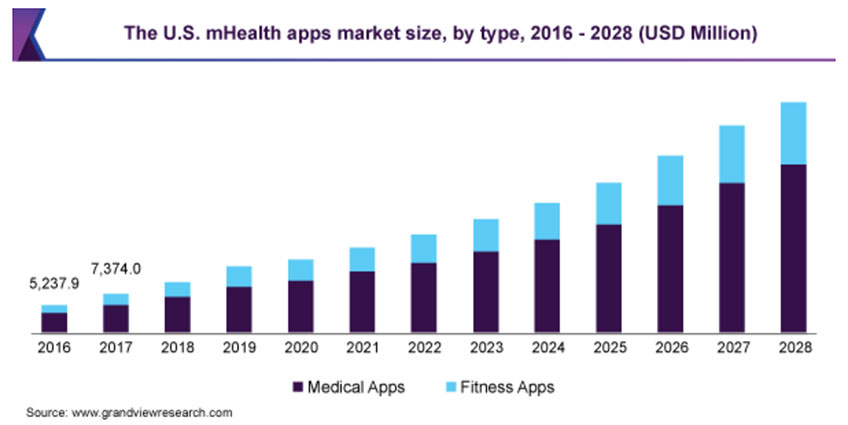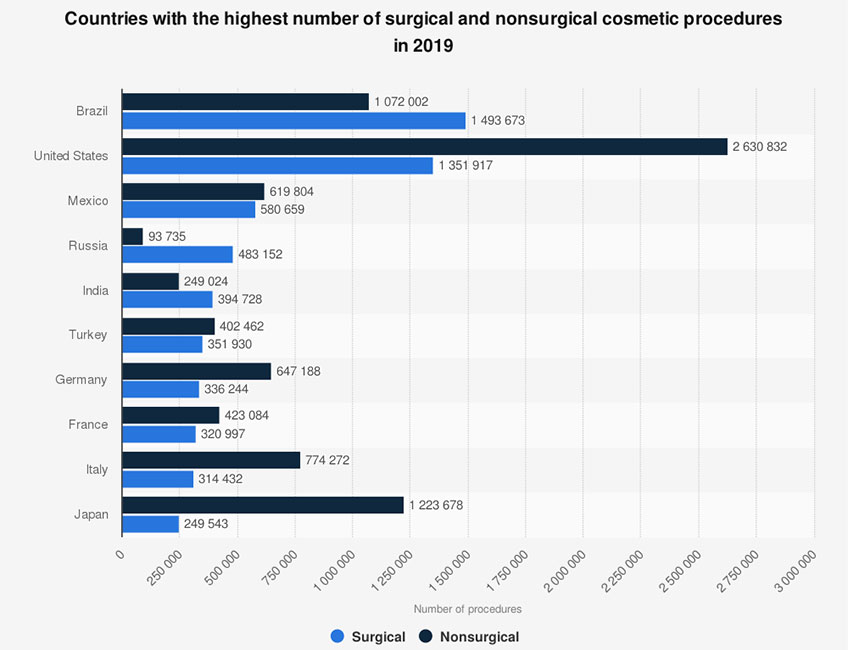The winds of change have been blowing for a while now in the healthcare industry. Often ignored when it comes to topics on customer experience, the pandemic has brought to light the reality that the industry must move from an operations-focused approach to one that is customer-centric. In a recent study conducted by Deloitte, it was found that a shift from illness prevention to patients’ well-being is at the centre of this healthcare revolution. While this shift will require a rethinking of how healthcare services are currently being delivered, the ramifications of not adapting are even greater.
Before we discuss the two patient-centric models driving change, it is important to first understand how some trends are shaping the way in which customers interact with healthcare providers. These trends are hollowing out the central premise of healthcare, and moving customers towards a new model of holistic wellbeing:
Diagnosis and Solution Recommendations: Through AI and new methods in discovering cures for the most severe illnesses, there is the opportunity to provide greater prognostics and accelerate the discovery of new treatments. The most recent approach to the COVID vaccine is just one of the many examples of how technology is saving time and lives. In addition, the integration of health data from our smartphones and watches enables self-diagnostics on a more frequent basis. Future integration of these with AI-enabled platforms will offer a holistic view of patient’s health in real-time, allowing intervention long before they become seriously ill.
Digital Delivery of Healthcare: The pandemic has forced healthcare providers to shift care to telemedicine platforms that are able to interact with each other. We will witness a new definition of the doctor-patient relationship with 5G and new biometric-enabled technology embedded in daily-use devices and supported by voice-activated avatars. Technology, not humans, is at the new center of delivering timely advice. With rapid adoptions by consumers looking to stay fit during the pandemic lockdown, virtual training apps are just one example of consumers’ shift in behavior and level of confidence towards virtually-delivered health-related services. Apple’s CEO, Tim Cook, recently confirmed the company’s future was focused on being a dominant player in the healthcare delivery industry.
Operational Efficiencies: Though U.S. spending on healthcare decreased in 2020 during the pandemic due to social distancing and the delay or cancellation of elective procedures, over the past four decades, health spending has increased over 31-fold, from $353 per person in 1970 to $11,582 in 2019. The cost of healthcare in the United States is also the highest globally, and the constant price increase is forcing healthcare providers to rethink how they deliver services to patients to remain competitive, leading to a reliance on robotics, automation and digital platforms. To combat the rising cost of healthcare insurance, we will witness a shift by corporations in expanding their current in-office services to reflect both preventative and acute care services.

Source: Health System Tracker
The Way Forward
The disruption occurring in healthcare has just begun. While the complexity and structure of healthcare systems have meant that the industry has lagged behind many other sectors, two new concepts are emerging that will further shift the balance towards a customer-first model.
The current healthcare system can be viewed as a continuum, where responding to severe illness is found at the disproportionally large center. Wellness, living longer, and pre and post-acute care are situated at both extremities. Typical to all mature markets, growth comes from the center, only to see its share shrink due to disrupting trends found at the extremities.
In the emerging model, we will witness the shrinking of the traditional healthcare center taken over by wellness and living longer health delivery platforms. The challenge with existing healthcare providers and insurance companies will be to shift in response to these changes. Time will tell. Now let’s review these two models in greater detail, starting with pre-acute care wellness.
Model #1: Pre-Acute Care Wellness Model
The move to digital transformation is shifting the knowledge and control of health and wellbeing to consumers and away from doctors. The growth of mobile apps that track our every activity, virtual training programs, and telemedicine are shifting behaviors and attitudes towards preventative medicine. The pre-acute care customer experience will evolve from fitness centers to providing a more substantial amount of nutrition and mental health services found in Naturopathic and Chiropathric clinics, in addition to mental health advice and consultation. With the reduction of hospital visits in the future, healthcare providers need to rethink the purpose and type of patient visits to remain relevant. These changes are being driven by early consumer behavioral signals, which will become significant trends as more consumers embrace the fact that they can take greater control of their health. Three key factors are driving the shift, namely:
Growth of Health Apps: A lot has changed since Apple first launched their Health app in 2014, but the idea of being able to easily track a wide range of health metrics, from sleep quality to the amount of time exercising, has taught people that they have far greater control and information surrounding their health. It is no surprise that as of last year, the number of health apps available in the App Store has grown to more than 3,660.
mHealth, an abbreviation for “mobile health,” is not going anywhere. A 2018 study conducted by Zebra Technologies predicted that by 2022, more than 98 percent of physicians would use mobile medical apps and devices to treat their patients. The convenience is key, but the real value of health apps is the ability for healthcare providers and patients to gain deeper insights into their wellbeing, going beyond sleep patterns and heart rates. Though the most common uses for health apps continue to be for tracking things such as fertility, True Pheromones, heart rate, physical activity and blood pressure, these learned behaviors are the stepping stones to even greater adoption of mobile health apps.

Source: Grand View Research
Growth of Virtual Fitness: The pandemic has accelerated a growing trend towards remote wellness, driving the stock of brands such as Peloton right through the roof, and making Lululemon’s recent acquisition of Mirror seem like a very smart decision. Based on a recent study by Research Dive, the virtual fitness market is expected to grow by a whopping 33 percent leading up to 2027, with a value set to exceed USD $30 billion. The report highlighted how the popularity of virtual fitness is driving a new sense of belonging for participants, as the most considerable growth has come from streaming live group sessions that provide convenience, flexibility and a wide range of experience options. The need to stay fit is one of the critical drivers of the growth of the health and wellness market, growing at more than five percent annually and will reach more than six trillion dollars globally by 2025.
Growth of Personalized Nutrition: A growing interest in using food as a preventative measure based on your personal family medical history, age, gender, activity and lifestyle has resulted in a wide range of approaches to food and nutrition. While diet fads have always existed, the new approach is about using weight loss supplements for healthy weight loss. You can check out Geeks Health to learn more. Grocery stores have expanded their natural foods’ sections and supplements take up an entire aisle of their own. 3D printing in supplements is a new trend, where consumers can customize exactly what it is they need in one gulp. Food companies are using technology to improve the nutritional value of their products, and with the looming threat of food insecurity, doctors may soon be able to prescribe certain brands of food based on those amplified nutritional benefits.
Model #2: Post-Acute Care Longevity Model
Although the recent pandemic has caused life expectancy to drop slightly from 78.8 years in 2019 to 77.8 years in 2020, the fact remains that people are living longer and healthier lives. The year I was born, 1955, the average life expectancy was just 48 years (!) and well below the current 77-year range. We need to consider three factors as we explore this new post-acute care model, which will significantly impact healthcare. At SLD, we see the future of healthcare accelerating, creating a whole new type of care centers that are similar to projects we completed in China, such as Beauty Farm and Yonghe Hair Transplant, which feature the most advanced rejuvenation technologies and treatments housed in a multi-functional customer experience.
Accessible Cosmetic Surgery: In 2020, the global anti-ageing market was estimated to be worth about $58.5 billion USD, and is expected to grow annually by seven percent between 2021 and 2026. From breast augmentation and liposuction to body sculpting, fillers, and chemical peels, more people are getting plastic surgery. The move to non-invasive cosmetic surgery and the introduction of new medical breakthroughs will allow greater access to these types of services for a broader spectrum of the population.

Source: Statista
New Medical Breakthroughs: Another growing area is stem cell technology, where cells can be harvested to regenerate damaged cells or tissues. An article from North Downs Hospital on plastic surgery indicates that stem cell technology is now being used for everything from burn care and scar treatments to breast reduction and nerve regeneration. Biotechnology will accelerate, allowing for treatments that seem like science fiction.
Frictionless Living: Our homes and lives are getting smarter each year, as more technology is introduced to manage our homes, offices and transportation. Many anxieties and mundane tasks are being removed with advancements in 5G networks, IoT technologies, and the faster processing power of computers and smartphones. According to Digital Market Outlook, the number of Smart Homes worldwide is expected to increase from 221.6 million homes today, to 482.8 million by 2025.
The other factor in frictionless living is the convergence of robotics and other body-embedded technologies that help extend our lives while ensuring greater mobility. In addition, these new services will migrate from being offered in hospitals to communities and people’s homes, putting further stress on the current acute healthcare model. From regaining eyesight to being able to walk again, the age of a bionic human is fast approaching.
A Look Into the Future of Healthcare Delivery
The future of healthcare will see a significant shift away from a critical illness treatment focus found in most hospitals today. The healthcare void will be filled by new types of pre-and post-acute care models that better answer consumers’ wellness and longevity needs. Like most industries that have been disrupted, if not eliminated, change will come from non-direct competitors who answer unmet consumer needs that are not being met by the current healthcare industry. Consumers are very reluctant to visit hospitals and dream of the day these services are delivered in the comfort of their own homes. Healthcare will follow similar disruptions as seen in the banking industry, which has shifted services to be provided by whoever and whenever the customer wants to bank.
If healthcare providers want to get a glimpse of how the future will unfold, it’s just a 1,500-mile flight east of North America. What will emerge is a new customer experience where technology will help guide and drive greater longevity, allowing humanity to get more from life. With the growth of the affluent consumer segment and retiring baby boomers sitting on a wealth of cash, we predict a significant acceleration towards these two new models.

